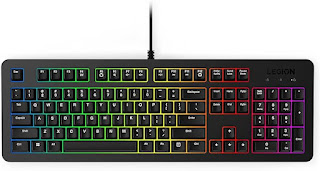How to use keyboard
In today's digital age, mastering the keyboard is essential for productivity and efficiency. Whether you're a student, a professional, or a casual user, knowing how to use the keyboard effectively can significantly improve your typing speed and overall computing experience. In this guide, we'll cover everything you need to know to become a keyboard ninja.
1. Understanding the Basics
The Layout:
Keyboards come in different layouts, with the most common being QWERTY. Understanding the layout is crucial for locating keys quickly.
Hand Placement:
Place your fingers on the home row (ASDF for the left hand, and JKL; for the right hand). This is the base position from which you'll reach other keys.
Finger Allocation:
Assign each finger to specific keys for optimal typing speed and efficiency. The index fingers are for the most used keys (e.g., E, T, A, O), while the pinky fingers handle keys like Shift and Enter.
2. Learning the Shortcuts
Common Shortcuts:
Familiarize yourself with essential shortcuts like Ctrl + C (Copy), Ctrl + V (Paste), Ctrl + Z (Undo), and Ctrl + S (Save) to speed up your workflow.
Application-Specific Shortcuts:
Different applications have unique shortcuts. Learn the ones relevant to your work or tasks to work more efficiently.
3. Improving Typing Speed
Touch Typing:
Practice touch typing to type without looking at the keyboard. This technique significantly improves speed and accuracy.
Typing Games:
Engage in typing games or exercises to enhance your typing skills in a fun way.
Repetition:
Practice regularly to build muscle memory and increase your typing speed over time.
4. Customizing Your Keyboard
Keyboard Settings:
Adjust keyboard settings in your operating system to suit your typing style, such as key repeat rate and delay.
Key Mapping:
Use third-party software to remap keys for a more personalized keyboard layout.
5. Maintaining Your Keyboard
Cleaning:
Regularly clean your keyboard to remove dust and debris that can affect performance.
Key Maintenance:
If a key becomes sticky or unresponsive, consider removing and cleaning it or replacing it if necessary.
6. Advanced Techniques
Text Expansion:
Use text expansion tools to create shortcuts for frequently used phrases or words, saving time and effort.
Macros:
Create macros for repetitive tasks to automate them and improve productivity.
Mastering the keyboard is a skill that can benefit anyone who uses a computer. By understanding the basics, learning shortcuts, improving your typing speed, customizing your keyboard, and maintaining it properly, you can become a more efficient and proficient typist. Practice regularly, explore advanced techniques, and soon you'll be typing like a pro


.webp)

Comments
Post a Comment